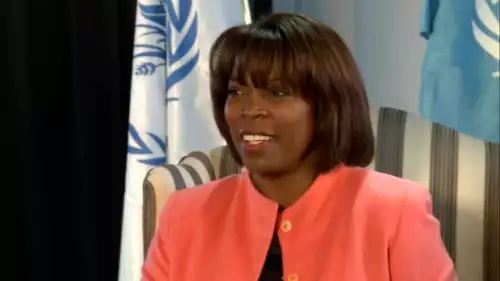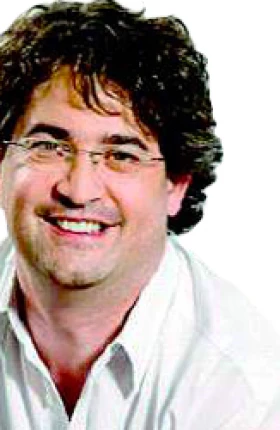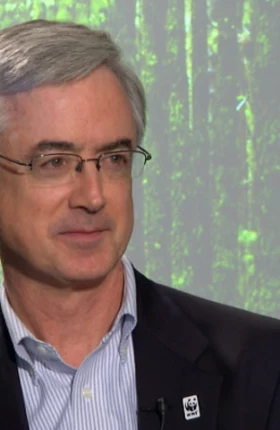
This is a modal window.

Ertharin Cousin is the executive director of the United Nations World Food Programme (WFP), the world’s largest humanitarian agency that works to meet urgent food needs while championing longer-term solutions to food insecurity and hunger. In recent years, the organization has been shifting its focus from food aid to food assistance, developing new tools to respond to critical food needs with the goal of reducing dependency and supporting global efforts to find long-term solutions to hunger. In 2003, WFP became a global social-impact partner of The Boston Consulting Group. BCG has worked with WFP to increase the effectiveness of its strategy, operations, organization, and knowledge management. Joint initiatives include developing a cooperative and collaborative approach for nutrition interventions; quantifying the impact of WFP’s school meals and other safety-net programs; enhancing WFP’s funding model; and improving the organization’s scale-up of emergency food reserves.
Federico Lalatta Costerbosa, a partner and managing director in the firm’s Milan office, recently spoke with Ertharin Cousin about the challenges and opportunities that WFP faces in the evolving fight against hunger. The following are excerpts from their conversation.
About Ertharin Cousin
At a Glance
Born in Chicago, Illinois
Education
University of Illinois at Chicago
University of Georgia School of Law
Career Highlights
2012–Present, Executive Director, United Nations World Food Programme
2009–2012, United States Ambassador to the United Nations Agencies for Food and Agriculture; Head of the U.S. Mission to the UN Agencies in Rome
2002–2006, Executive Vice President and Chief Operating Officer of Feeding America (formerly America’s Second Harvest)
Served as White House Liaison to the State Department during the Clinton Administration and received a White House appointment to the Board for International Food and Agricultural Development
Lead government communications and community affairs for two large U.S. grocery chains, Albertsons Foods and Jewell Foods. While working for Albertsons, she served as President and Chair of the company’s corporate foundation, managing the organization’s philanthropic activities.
Maybe we’ll just start by describing a bit what WFP does and what are its objectives.
WFP employs about 14,000 people in over 80 countries. And with those 14,000 people, we support the food assistance needs of over 90 million people every year. And that work includes not just feeding stomachs—which is what WFP was known for for many, many years—we were the organization that got large amounts of food to large numbers of people fast, in an efficient and effective way. What we have recognized is that if we really are to resolve the issue of food insecurity, it’s not just about feeding stomachs. We must transform our assistance to not just food aid but to other forms of assistance as well. In many cases, food is available; it’s just not accessible to the poor. And so providing accessibility through cash and vouchers programs, school feeding programs, other opportunities that support market development—that’s what WFP is very much about.
Next week, it will be one year that you’ve been executive director of WFP. How do you see yourself in the role of the leader of this organization?
I smile, because as I have gone through this year, and as I come to the close of the year, people say, “You’ve done a great job.” “You’ve been a great leader in a year.” The reality of it is, I lead a great team. And the mark of any good leader is the ability to recognize the strengths of a good team, and to motivate people to bring those strengths to the table every day. In order for us to transform this great team to an even better team, we need to transform their skills, change some of our processes in how we deliver services. People have worked together to not just recognize what’s needed but to help us achieve the outcomes that we all recognize are necessary for us to become the organization that the world needs from us in 2020 and 2050.
You’ve set a very ambitious transformation agenda for WFP.
Ambitious is a good word. Thank you. What we call it is: “how do we become fit for purpose?” If we are going to move from being what we’ve always done in the past—moving large amounts of food to large numbers of people—to becoming the efficient and effective deliverer of food assistance programs, it means that we need to transform processes, we need to change the skill sets of those who work at country level, we need to provide different resources at country level. And what that requires is that we not only focus on what we do but how we do it, and how we fund it. Those are all very difficult questions to ask of an organization. But the good part about it is that we recognize that this is a journey, and we’ve begun the process that is necessary to achieve our goals.
What have you learned in this year?
In Italian, there is a saying everyone uses, “piano, piano,”—one step at a time. I’ve learned the truth of that statement working here at WFP. Because you want to come into a new organization and, after you’ve identified the changes that need to be made, jump in and begin to do the work to make those changes. And what you realize—with a very large UN organization that’s spread across the entire globe with as many people as we have—is that it’s “piano, piano,” it’s step by step. It’s not going to happen in one year, and many of the changes that we are working to achieve will not happen in five years. But we’ll see the direction of the organization move; we’ll see structural changes inside the organization, so I’ve learned patience. Calm down a bit, it’s all going to happen, and as long as we are moving in the right direction, it’s OK.
What are the most substantive issues you’ve worked on in the last 12 months?
This has been, as we’ve talked about, a year where we’ve assessed the changes that are necessary to move WFP from a good organization to a great organization. And inside of that work, of course, we’re not just looking at processes; we look at what are the issues, the substantive issues WFP must focus on as we continue to move forward to meet the food assistance needs of those we serve. We are in a time when availability of food is no longer the major challenge for why people are food insecure. So what the challenge is today is an issue of access, food in locations where the hungry people are not in those locations, and the inability to move food from the locations where it is harvested to the locations where it is needed, resulting in many countries experiencing up to 50 to 80 percent waste or loss of agricultural harvests, while people in that same country go hungry.
If we think about the fight against hunger, are you optimistic?
I am always optimistic. I am a glass-half-full kind of person all the time. And if we look at the history of the fight against hunger, fifty years ago when WFP started, our largest recipient country was China. And today, China is not just no longer a recipient of WFP [assistance], they are also a very dynamic economy on their own. And they are feeding their own people with surpluses. So, where we work is changing over the life of this organization, because countries are continuing to move forward. Our challenge is to ensure that the progress that we’ve seen in Southeast Asia—that we transfer that same success story to our work in Sub-Saharan Africa because the percentage who are food insecure is greater in Sub-Saharan Africa than it is anyplace else on earth. And so, unless we begin to create the structural change that’s necessary in many of the countries we serve there, we can’t make a difference in those numbers. But we know we can make a difference, because we’ve done it before. It’s about bringing the right tools to the countries to support not just the immediate needs, the food assistance needs of those we serve, the nutrition needs of those we serve, but working with governments to help them build their capacity so that ultimately families can feed themselves. That’s how we reduce hunger. That’s how we eliminate hunger. So yes, I am very, very positive about the opportunities that are ahead of us. But I also recognize that there are challenges that we must overcome in order to seize those opportunities. And that will require us to build more partnerships with the private sector, more partnerships with the governments that support us, as well as more partnerships with the governments and communities where we work.
Thank you very much for joining us today, Ertharin. It is always an inspiration to talk to you.
Thank you.




